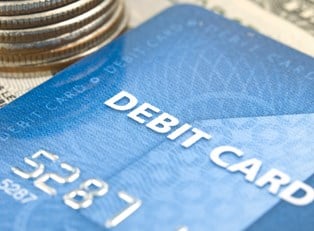The term bank card is synonymous with debit card. This form of payment gives the cardholder electronic access to a bank account. This plastic form of payment immediately transfers funds from the cardholder's account at a financial institution. Most merchants accept debit cards in lieu of cash for purchases. Many people prefer debit cards because of their convenience and the number of locations where they are accepted. The number of debit card users has grown by at least 60% since 2005 and continues to be the preferred payment of choice by consumers.
A Common Payment Type
Debit cards provide users with a universally accepted form of payment. They can also be used as an ATM card to withdraw funds using a Personal Identification Number (PIN) when the consumer prefers to use cash for purchases. When shopping at a store, the user may elect to swipe the card and verify it with a signature or enter the PIN number. Many online merchants accept debit cards for purchases, but some recommend using credit cards instead. Purchases can be made over the Internet without having to present a physical card.
Credit cards and debit cards give consumers an easy way to carry money without actually having physical cash in their wallet. They differ in that a credit card transaction does not result in the immediate withdrawal of funds from a bank account, as is the case with a debit card. Using a credit card is similar to getting a small loan every time it is used. If the consumer does not pay off the balance of the credit card at the end of the month, interest is applied to the balance. While credit cards limit the amount that can be spent, debit cards are only limited by the balance in the checking account.
Types
The most common debit card type is one that is directly linked to a checking account. It is the same as writing a check for an account at a bank or credit union, except that it is automatically deducted and there is no need to make monthly payments. It is a good idea to keep track of debits with a checkbook register or other similar method. This helps prevent overdrafts.
Pre-paid cards serve the same purpose as a debit card with funds being deducted from the pre-paid account immediately. These pre-paid cards are reloadable. They offer the same convenience of a debit card, but may involve monthly fees or transaction fees. One of the benefits of a pre-paid debit card is that it does not require the user to have a bank account. Many retailers offer these cards for sale at checkout stands.
Concerns
Because debit cards are susceptible to fraud and unauthorized use, consumers should be aware of the potential risks. A growing concern is the protection of personal financial information from identity theft. Many major retailers have had their computer systems hacked and customer data stolen, including debit card and PIN numbers. Be wary of online companies and purchases. Also, avoid ATMs with a long line of waiting people. Always keep the card in sight when paying for a service or purchase.



